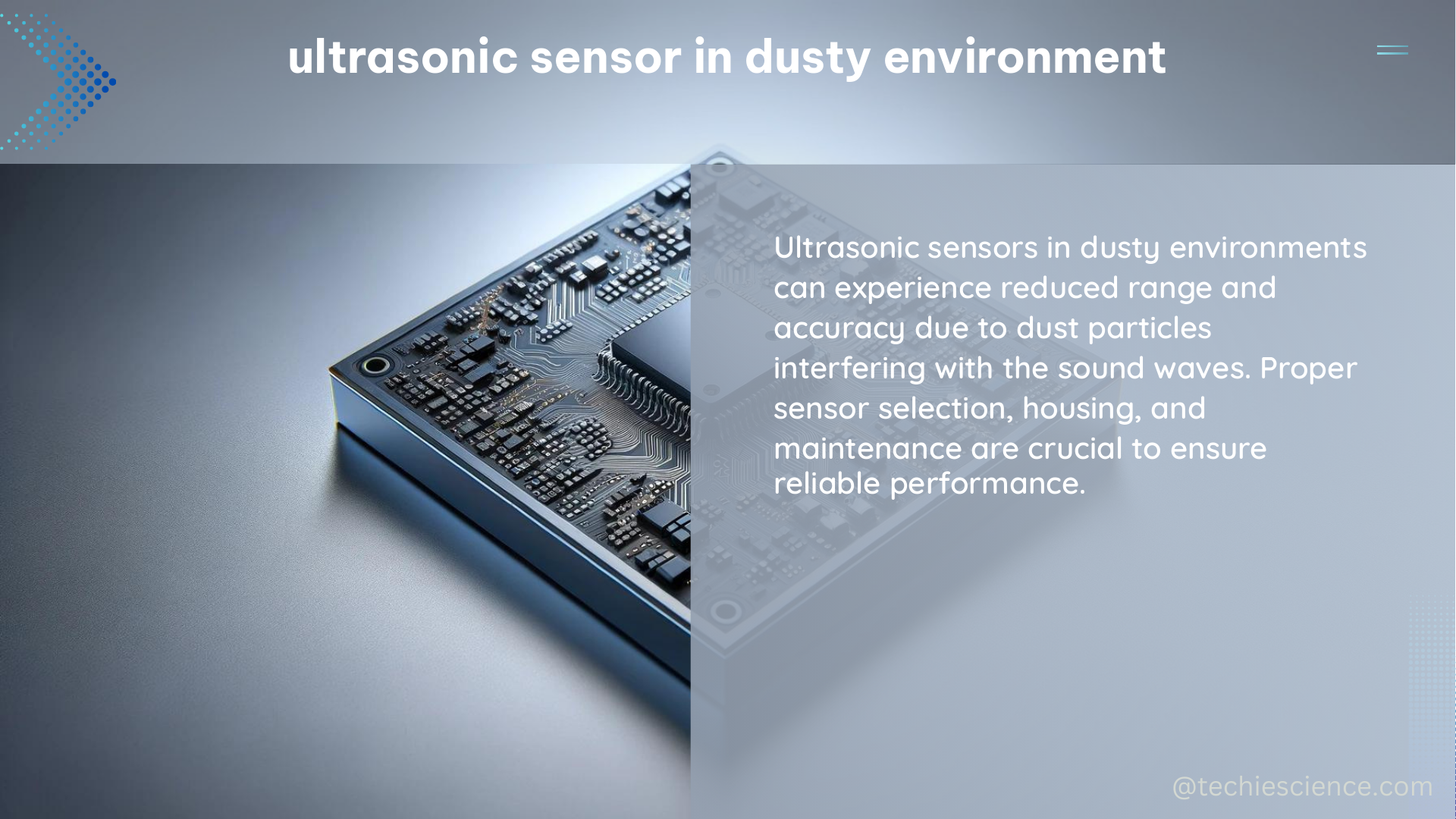Navigating the challenges of using ultrasonic sensors in dusty environments requires a deep understanding of signal processing, data analysis, and sensor placement. This comprehensive guide delves into the technical specifications, best practices, and a step-by-step DIY approach to ensure optimal performance of ultrasonic sensors in harsh, dust-laden conditions.
Technical Specifications of Ultrasonic Sensors in Dusty Environments
When using an ultrasonic sensor in a dusty environment, the voltage signal from the sensor indicates distance measurements ranging from 0.2 to 1.5 meters. This distance range is achieved through a calibration curve provided by the manufacturer. The microprocessor’s analog-to-digital conversion (ADC) function plays a crucial role, offering a 12-bit resolution and continuous measurement with a conversion time of 100 nanoseconds in stable conditions. This configuration leads to a minimum distance resolution of 0.0003 meters.
To capture the periodic characteristics of the target’s movement, a fixed sampling frequency of 100 Hz (100 measurements per second) is employed. This high sampling rate allows for detailed analysis of the target’s behavior, such as standing time and frequency, in the time domain with a resolution of 0.01 seconds.
Signal Processing and Data Analysis

Effective signal processing is essential in dusty environments, where exceptional fluctuations due to systematic errors can occur. To mitigate these fluctuations, the logged data is post-processed by calculating the mean of adjacent values, a technique known as denoising. This process helps to smooth out the data and remove any outliers or anomalies caused by the dusty conditions.
The post-processed data is then visualized using MATLAB, a powerful data analysis and visualization tool. By plotting the individual distance data from each sensor’s position, researchers can compare the variation and frequency of the target’s movement between control groups in the time domain.
Sensor Placement and Alternatives
Proper sensor placement is crucial when using ultrasonic sensors in dusty environments. In a study on estrus detection in sows, an ultrasonic sensor array was installed on the front-end side of the stall, with the sensors placed at 30-centimeter intervals according to the height of the stall. This strategic placement allowed for the measurement of standing time and number into the standing sensor in estrus-synchronized sows, with data collected four times during the experiment period.
However, in some cases, the dusty environment can pose a significant challenge for ultrasonic sensors. Specifically, sawdust is known to be a poor reflector of sound, which can lead to accuracy issues for the sensor. In such scenarios, an optical sensor may be a more suitable alternative, as it can measure the level of the sawdust through the barrel near the top, where the dust accumulation is less severe.
DIY Ultrasonic Sensor in Dusty Environments
To create a DIY ultrasonic sensor system for use in dusty environments, you will need the following materials:
- Ultrasonic sensor (e.g., GP2Y0A02YK0F, Sharp Inc, Japan)
- Microcontroller (e.g., NUCLEO F446, ST-LINK, Japan)
- Small LCD module
- C programming language for the microcontroller
Follow these steps to build your own ultrasonic sensor system:
- Connect the ultrasonic sensor to the microcontroller and integrate a small LCD module to display the measurement data.
- Install the ultrasonic sensor on the front-end side of the stall, positioning it at 30-centimeter intervals according to the height of the stall.
- Measure the standing time and number into the standing sensor in estrus-synchronized sows, collecting data four times during the experiment period.
- If the dusty environment, such as sawdust, is found to be a poor reflector of sound, consider using an optical sensor instead, as it can provide more reliable measurements in these conditions.
By following these guidelines and leveraging the technical specifications outlined, you can create a robust and reliable DIY ultrasonic sensor system capable of operating in challenging, dust-laden environments.
Conclusion
Mastering the use of ultrasonic sensors in dusty environments requires a comprehensive understanding of signal processing, data analysis, and sensor placement. By adhering to the technical specifications, implementing effective data processing techniques, and considering alternative sensor options, you can overcome the challenges posed by dust and ensure accurate and reliable measurements in these harsh conditions.
References
- Estrus Detection in Sows Using Ultrasonic Sensors
- Distance Sensor for Saw Dust
- Sensors for Use in Dusty Environments

The lambdageeks.com Core SME Team is a group of experienced subject matter experts from diverse scientific and technical fields including Physics, Chemistry, Technology,Electronics & Electrical Engineering, Automotive, Mechanical Engineering. Our team collaborates to create high-quality, well-researched articles on a wide range of science and technology topics for the lambdageeks.com website.
All Our Senior SME are having more than 7 Years of experience in the respective fields . They are either Working Industry Professionals or assocaited With different Universities. Refer Our Authors Page to get to know About our Core SMEs.